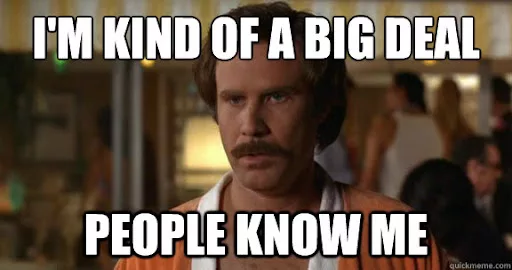
Most people have crap CVs. Don’t be most people.
I had to update my CV as part of a recent job application process.
This got me thinking that I’ve seen a lot of terrible CVs over the years.
When was the last time you updated yours?
If it’s been a while, here are 10 things you can add to your CV to really make it shine.
These CV tips have given me an application to interview rate of about 90% over the last 7 years, just so you know I’m not blowing smoke out of my arse. 🚭
Can’t be bothered to read it? Here’s a video version.
For more corporate jobs, your CV will often get passed through an Applicant Tracking System (ATS).
These systems automatically separate out the time wasters to cut down on hiring admin.
However, they often use rudimentary AI to read your CV.
If your CV is formatted poorly, it won’t read it correctly and you could get chucked onto the reject pile.
The lesson here is to not use a super beautiful and complex layout. I’m looking at you, Canva templates 🧐.
Stick to basic design and a standard one or two column layout.
Chronologically list your experience and education with the most recent at the top.
Ideally, it should be saved as PDF with your name and job title, e.g. “Dav Nash – Email Spammer – CV.pdf”.
Pew pew 🔫. Use bullet points for everything.

A wall of text explaining the intricacies of your roles is uninviting.
Most recruiters skim read CVs and they will struggle to pick out the meaningful parts.
Break down your experience into manageable bullet points to create an easily-readable list of your greatest achievements.
Just as you would bold text in a blog, do the same in your CV to highlight important parts.
E.g. “Increased revenue 20% in 6 months using xyz strategy”
Don’t overdo it though, or it will lose its impact.
As as marketer, you know the value of social proof.
Why not incorporate it into your CV?
Go and grab some of your best LinkedIn recommendations and sprinkle a couple between your experience roles. Make sure to cite the author and job title.
If you don’t have any LinkedIn recommendations, go ask your current and previous colleagues. Ideally, people who are senior to you.
Most will be happy to recommend you if you give them one in return.

Loads of people have a handful of key skills in a section somewhere.
However, most CVs I have seen don’t use them wisely.
These are not key skills:
Those are expected of most competent employees and offer nothing to the recruiter or employer.
These are key skills:
Can you see the difference?
Market the skills you’ve learned, not your personality.

CVs should only be 1 or 2 pages of A4. If you’re creeping onto 3 pages, you’ve either put in too much fluff, or you have too many jobs listed.
You don’t need to put every job on your CV.
Try to stick to the most recent 3 or 4 roles. Offer a link to LinkedIn for the others.
Only expand on the roles which are actually relevant to the job you’re going for.
For example, if you’re shooing for a Senior Marketing Exec role, there’s no point bulking out your role in Halfords Customer Service. It just takes up valuable space where you can add meat to the relevant roles.
Equally, if you have a degree or equivalent qualification, get rid of your A-Levels and GCSEs. It’s assumed you have those or you wouldn’t have a degree.
Leave off irrelevant qualifications, like your Lifeguarding Certificate, and that award you got from LinkedIn for being good at MS Excel.
Nobody is going to judge you for leaving stuff out, as long as the stuff that’s left behind is relevant.
Controversial, but get rid of your mugshot.

Seeing your face before the interview doesn’t add anything to the hiring process.
If anything, it enables unconscious bias.
You want to be judged on your skills and experience, not your haircut, dress sense, gender or age.
So drop that profile pic from your CV and use the space for your experience.
If the hiring manager is that desperate to see what you look like, they can visit your LinkedIn or offer an interview. 🔭
Some CVs will have a paragraph at the top to explain who you are.
If yours doesn’t, consider adding one.
However, don’t use this space to say you’re a “friendly team player who has worked for a lot of big companies. I really like fishing and playing beer pong on my days off”. 🥱
Keep it concise and to the point:
For your past and present roles, consider adding some key information.
Many CVs I’ve seen read a bit like this:
Marketing Executive
Example Company Ltd., Full Time
This tells a recruiter exactly nothing.
A lot of jobs in marketing involve roughly the same kind of tasks. Nothing in that list makes you special.
Try this instead:
Marketing Executive
Example Company Ltd., Full Time
Award-winning, full-service media agency. Won Best Newcomer 2024 at SEO Awards.
Same job, same role, but suddenly you look like an achiever, not a doer.
If you want 🤷.
At least now, your CV will truly shine.
Good luck!
Founder of Latent Clarity and author of the Clarity newsletter.
I help new and solo marketers be the best they can with practical, actionable, (and sometimes funny) advice.